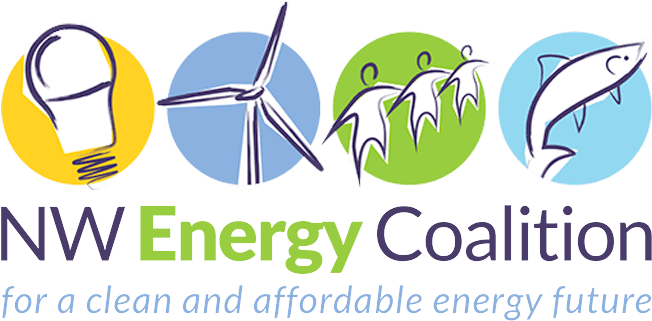News
Idaho: New financing option available for solar and energy efficiency
The NW Energy Coalition is partnering with Puget Sound Cooperative Credit Union (PSCCU) to expand solar financing in the Northwest. Since 1934, PSCCU has been empowering members to do more than they thought they could with their banking relationship. The credit union maintains a strong commitment to its social, economic and environmental convictions and…
NW Energy Coalition lauded for climate action
Elisheva Mittelman and Kevin Steinberger of the National Resources Defense Council are publishing a series of blog posts that describe how states and regions are rushing to fill the climate action vacuum left in the wake of the Trump administration’s abandonment of the Paris Agreement and a bevy of Obama-era environmental measures. Their August 30 post titled,…
A decade under Initiative 937 yields new jobs, new industries, and affordable electricity
Good energy and environmental policy is also good economic policy. That’s the message of a new video collection produced by the American Wind Energy Association (AWEA), Renewable Northwest, and the NW Energy Coalition. The lead five-minute video explores how Washington’s clean energy landscape has blossomed since Initiative 937 was enacted in 2007. With sections devoted…
Energy Efficiency leads the way in carbon emission reductions
In 2005, annual emissions of CO2 in the US reached an all-time high of just under six billion tons. By 2016, emissions had declined by 14% from that peak and by 18% when adjusted for growth in population and economic activity. How have we done it? Zeke Hausfather provides a detailed look…
Montana organizations unite to oppose Trump administration budget cuts and policies
On Tuesday, NW Energy Coalition policy analyst, Diego Rivas, joined representatives from the Montana Wildlife Federation and the Montana Farmers Union as well as Helena City Commissioner Andres Halladay to publicize federal government policies and proposed budget cuts that threaten Montana’s economy and communities. The event was part of a three-city tour to draw attention…
Rocky Barker: Snake River dams expendable?
An informed counterpoint to the flawed EarthFix “Dams or Salmon?” video Idaho Statesman reporter, Rocky Barker, a speaker at the NW Energy Coalition’s spring conference last April in Boise, has published the second piece in his series on the question of whether Columbia River salmon will ultimately survive. This installment offers hope based on the fact that, as grid…
EarthFix/OPB video, “Dams or Salmon?”, never gives fish a chance
“Explainer” video doesn’t explain, it distorts. We love short, animated explainer videos. They entertainingly and quickly reduce complex issues to their simplest possible terms. The problem is they sometimes overshoot the mark and, instead of the simplest possible terms, they instead present issues in ways that are something less than simple. That’s what we get…
BPA reduces Montana Intertie rate, but more action is needed
NW Energy Coalition welcomes BPA recognition of barriers to development of renewable energy in Montana SEATTLE, Washington — Yesterday the Bonneville Power Administration announced that its 2018-19 rates will include a fifteen percent reduction in the Montana Intertie rate – a $2 per MWh charge that applies to a 90-mile section of power lines between…
Montana: New financing option available for solar and energy efficiency
Financing of solar and energy efficiency in Montana: Credit Union Partnership — The NW Energy Coalition is partnering with Puget Sound Cooperative Credit Union (PSCCU) to expand solar financing in the Northwest. Since 1934, PSCCU has been empowering members to do more than they thought they could with their banking relationship. The credit union maintains a…
New Washington solar bill is a move in the right direction
OLYMPIA, Washington — During its last-minute rush to enact a new state budget, the Washington legislature managed to agree on a new package of incentives for commercial, community, and home solar installations.
The bill provides those businesses with a degree of predictability about how the state will gradually reduce incentives between now and the year 2029 when they will vanish altogether. By that time, it is expected that solar costs will have diminished to the point that incentives are no longer necessary.










